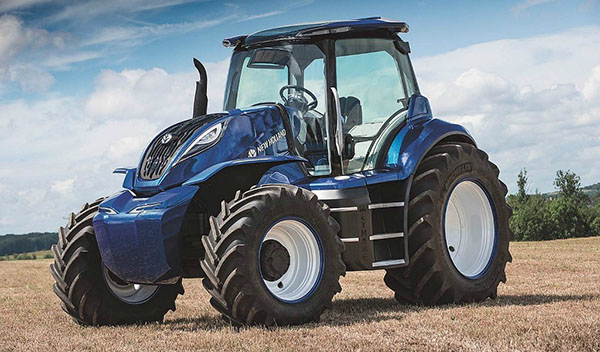The Low Carbon Tractor project (LoCT) has unveiled the first pre-development of its biomethane-powered tractors, which features emissions technology and expertise from Eminox.

The New Holland Low Carbon Tractor was created by a consortium led by global capital goods company CNH Industrial, together with its agricultural brand, New Holland, and powertrain brand, FPT Industrial. The group includes emissions control specialist Eminox, along with thermal management and ceramic coating specialist Zircotec and engineering consultant Ricardo.
LoCT aims to develop a commercially viable, sustainable tractor that operates on biomethane, which can be generated from farm and food waste while complying with the latest European and US emissions standards. This vehicle will play a part in the development of a carbon-neutral agricultural supply chain, as well as reduce costs for operators. The project has been partly funded by the Advanced Propulsion Centre (APC), and the New Holland LoCT project was shown at the Low Carbon Vehicle Event 2019, held in September.
Eminox is contributing its 40 years of experience in designing and manufacturing exhaust after-treatment systems (EATSs) to the project. LoCT is overcoming the technical challenges around creating an EATS that fits into a minimal space envelope, and copes with high-exhaust gas temperatures and variable fuel quality, while still meeting emissions standards. Eminox also has extensive experience, which it has developed working with CNH Industrial on heavy-duty applications of gas engines in commercial vehicles.
'The success of the Low Carbon Tractor project is a testament to the innovation, skills and experience of all the partners involved, as well as CNH Industrial’s vision of helping create more sustainable farming and grounds care operations,' said Francesco Beltritti, Head of Business development for Eminox. 'Ensuring that these tractors meet stringent emissions regulations is a key factor in project success. Our expertise in designing and manufacturing exhaust after-treatment systems has enabled us to create a solution that deals with the tough space and heat constraints of the vehicle environment.'
Eminox’s EATS uses a three-way gas catalyst. Its engineers have focused on optimising exhaust gas flow, in conjunction with catalyst formulation. The extremely challenging space constraints for the exhaust after-treatment system were heightened by LoCT needing specialist gas tanks to store the fuel at the required pressure and maintain the range of the tractor.
'The LoCT project fits within New Holland’s pioneering work in the use of alternative fuels in agriculture. In collaboration with our partners, we aim to develop a commercially viable tractor that can operate on sustainable, locally sourced biomethane,' commented Sean Lennon, New Holland’s Head of Tractor Product Management. 'This is the vital link that closes the virtuous cycle of the Energy Independent Farm SM, which sees farmers producing fuel from waste products, taking sustainability to possible carbon neutrality. APC funding is critical to ensuring the commercialisation of a truly sustainable low carbon and fully practical tractor in the UK, as it is enabling us to take an earlier innovation further towards a full commercial solution.'
Within the project consortium, Zircotec is providing its expertise by managing the heat generated by the gas engines in tractors. Ricardo is delivering engineering support by integrating the gas engine, fuel tanks, exhaust system and associated parts into the current New Holland agricultural tractor offering.

